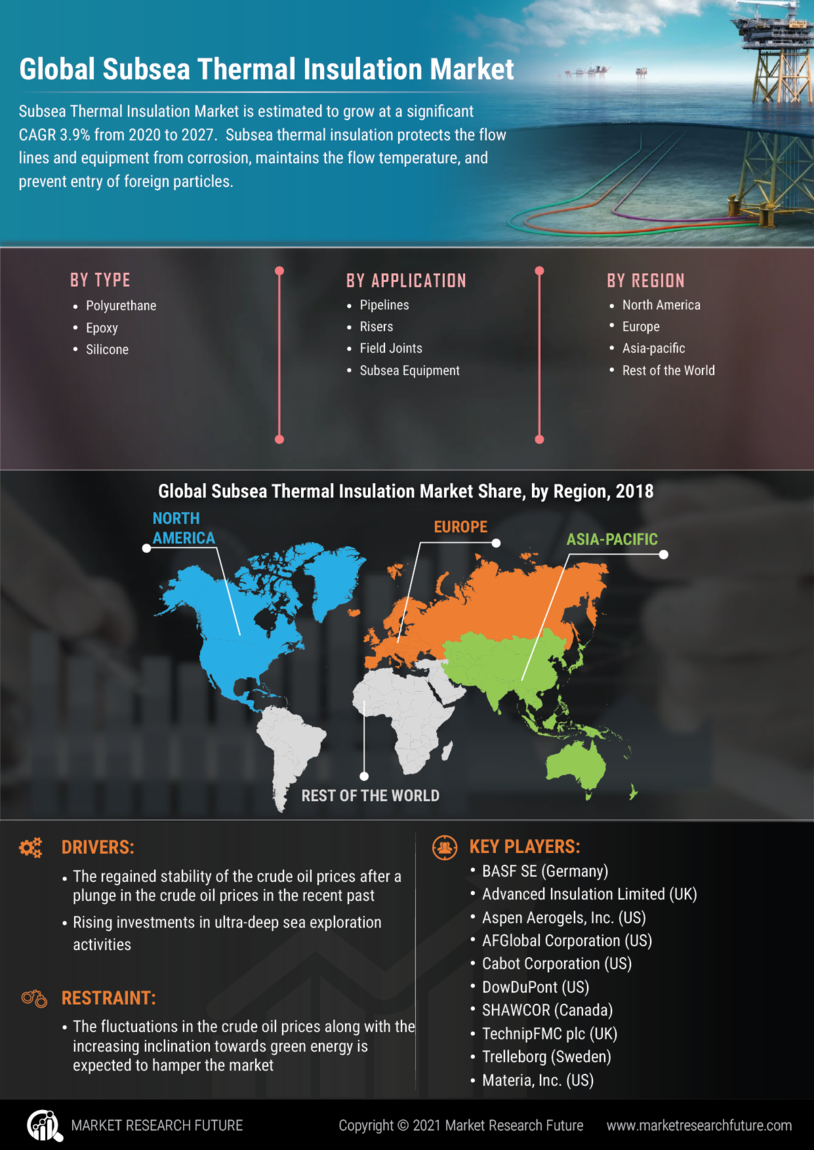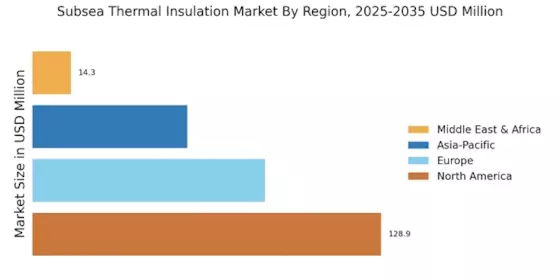Increasing Demand for Energy Efficiency
The Subsea Thermal Insulation Market is experiencing a notable surge in demand for energy-efficient solutions. As energy costs continue to rise, operators are increasingly seeking insulation materials that minimize heat loss and enhance operational efficiency. This trend is particularly pronounced in offshore oil and gas operations, where maintaining optimal temperatures is crucial for the integrity of subsea pipelines. According to recent estimates, the subsea thermal insulation market is projected to grow at a compound annual growth rate of approximately 6% over the next five years. This growth is driven by the need for improved energy management and cost reduction in subsea operations, highlighting the critical role of thermal insulation in achieving these objectives.
Regulatory Compliance and Safety Standards
The Subsea Thermal Insulation Market is significantly influenced by stringent regulatory compliance and safety standards. Governments and regulatory bodies are increasingly mandating the use of advanced thermal insulation materials to ensure the safety and efficiency of subsea operations. These regulations often focus on minimizing environmental impact and enhancing the safety of personnel working in challenging underwater conditions. As a result, companies are compelled to invest in high-quality thermal insulation solutions that meet these evolving standards. The emphasis on compliance not only drives market growth but also encourages innovation in insulation technologies, as manufacturers strive to develop products that align with regulatory requirements while maintaining performance.
Focus on Sustainability and Environmental Impact
The Subsea Thermal Insulation Market is increasingly aligning with sustainability initiatives aimed at reducing environmental impact. As the energy sector faces mounting pressure to adopt greener practices, the demand for eco-friendly insulation materials is on the rise. Manufacturers are exploring sustainable alternatives that not only provide effective thermal insulation but also minimize carbon footprints. This shift towards sustainability is likely to influence purchasing decisions, as companies prioritize materials that align with their environmental goals. The integration of sustainable practices within the subsea thermal insulation market is expected to foster innovation and drive growth, as stakeholders seek to balance operational efficiency with environmental responsibility.
Technological Advancements in Insulation Materials
The Subsea Thermal Insulation Market is witnessing rapid technological advancements in insulation materials. Innovations such as aerogels, advanced polymer composites, and nanomaterials are revolutionizing the performance characteristics of thermal insulation. These materials offer superior thermal resistance, lightweight properties, and enhanced durability, making them ideal for subsea applications. The introduction of these advanced materials is expected to propel market growth, as they provide solutions that can withstand extreme underwater conditions. Furthermore, the development of smart insulation technologies, which can monitor temperature and structural integrity in real-time, is likely to enhance operational efficiency and safety in subsea environments, thereby expanding the market's potential.
Rising Investments in Offshore Exploration and Production
The Subsea Thermal Insulation Market is benefiting from rising investments in offshore exploration and production activities. As energy companies seek to tap into untapped reserves, there is a growing need for effective thermal insulation solutions to protect subsea infrastructure. The increasing number of offshore projects, particularly in deepwater and ultra-deepwater regions, necessitates the use of high-performance insulation materials to ensure the reliability and longevity of subsea pipelines and equipment. This trend is expected to drive significant growth in the thermal insulation market, as operators prioritize the implementation of robust insulation systems to mitigate risks associated with temperature fluctuations and environmental challenges.


















Leave a Comment